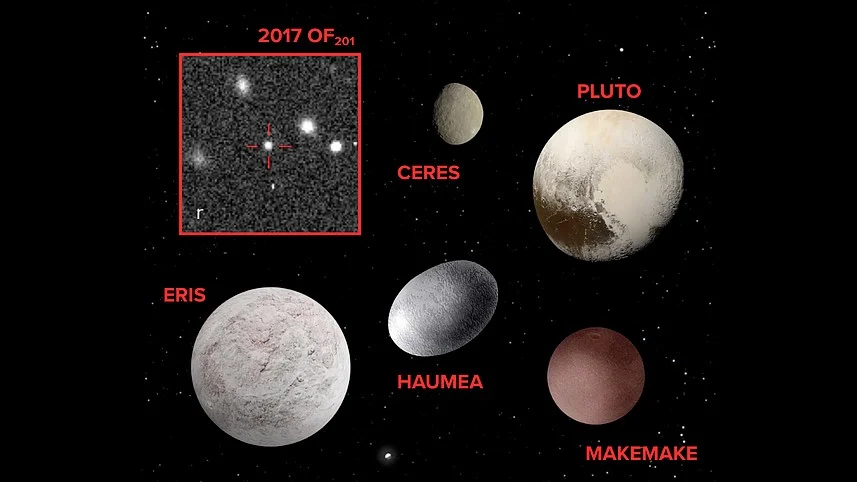
Is Planet Nine Doomed? New Dwarf Planet Discovery Challenges Solar System Theories
The outer reaches of our solar system are proving to be more mysterious than ever. Astronomers have recently identified a new dwarf planet, tentatively named 2017 OF201, far beyond Neptune, sparking both excitement and debate about the potential existence of the elusive Planet Nine.
This discovery, confirmed by the International Astronomical Union's Minor Planet Center, has scientists eagerly studying its unusual orbit and potential implications for our understanding of the solar system's formation. While not officially peer-reviewed yet, the findings have already been published on the preprint server arXiv, generating considerable buzz within the astronomical community.
What Makes 2017 OF201 So Special?
2017 OF201 distinguishes itself primarily through its extreme and elongated orbit. Calculations reveal its journey around the sun takes approximately 25,000 Earth years! At its closest approach (perihelion), it reaches about 45 AU (Astronomical Units), similar in distance to Pluto. However, it then ventures out dramatically to a whopping 1,600 AU at its farthest point, dwarfing even Neptune's distance. This vast distance suggests the dwarf planet spends only 1% of its orbital time in a position close enough for detection by current telescopes.

Sihao Cheng, an astrophysicist at the Institute for Advanced Study in Princeton, NJ, believes the oblong orbit hints at complex gravitational interactions with Neptune and the Milky Way's gravity. Describing it as a migration, with more than one step, suggests a complex origin story for this far-flung planet and potentially challenges existing understandings about how planets form and are ejected in the outer solar system.
Planet Nine: Confirmation or Contradiction?
The existence of Planet Nine, a hypothetical giant planet theorized to be lurking in the distant Oort cloud, has been proposed to explain the clustered orbits of other extreme trans-Neptunian objects (ETNOs). However, 2017 OF201's orbit doesn't neatly fit this pattern. Some researchers suggest that if Planet Nine existed, its gravitational pull would likely destabilize 2017 OF201's orbit rather quickly, raising doubts about Planet Nine's influence or even its very existence.
Despite the challenge, some scientists like Eritas Yang at Princeton University remain hopeful for the discovery of Planet Nine because it would be more interesting to see the interactions. Even if we don't definitively find Planet Nine, the discovery contributes to the ongoing modeling efforts to understand different forces shaping the solar system’s outer edge.

The Future of Discovery
The discovery of 2017 OF201 highlights how much remains unknown about our own solar system. Astronomers estimate that hundreds of similar objects may exist, too faint and distant to be detected with current technology. The upcoming Vera C. Rubin Observatory, with its enhanced capabilities, may revolutionize our understanding by uncovering these hidden worlds.
Will 2017 OF201 ultimately support or refute the existence of Planet Nine? Only future observations and analysis will tell. This discovery serves as a reminder that even within our cosmic neighborhood, many secrets still await discovery.
What are your thoughts on the possibility of Planet Nine? Share your theories and opinions in the comments below!